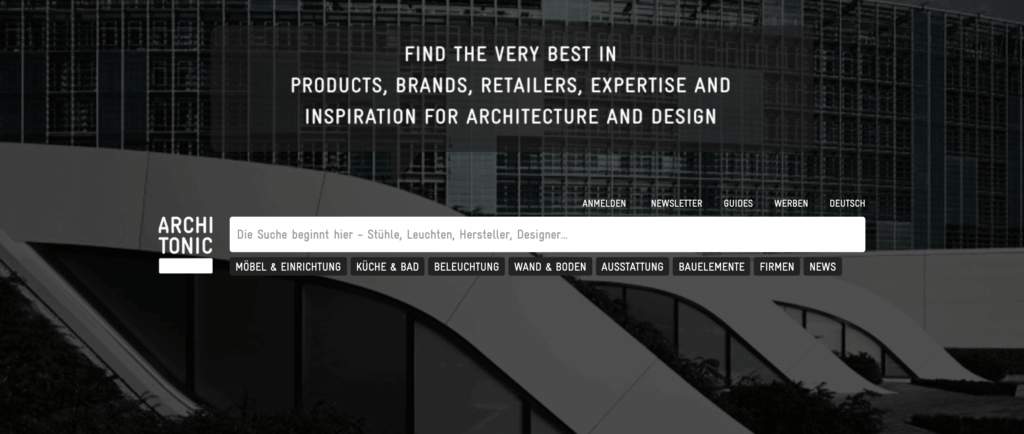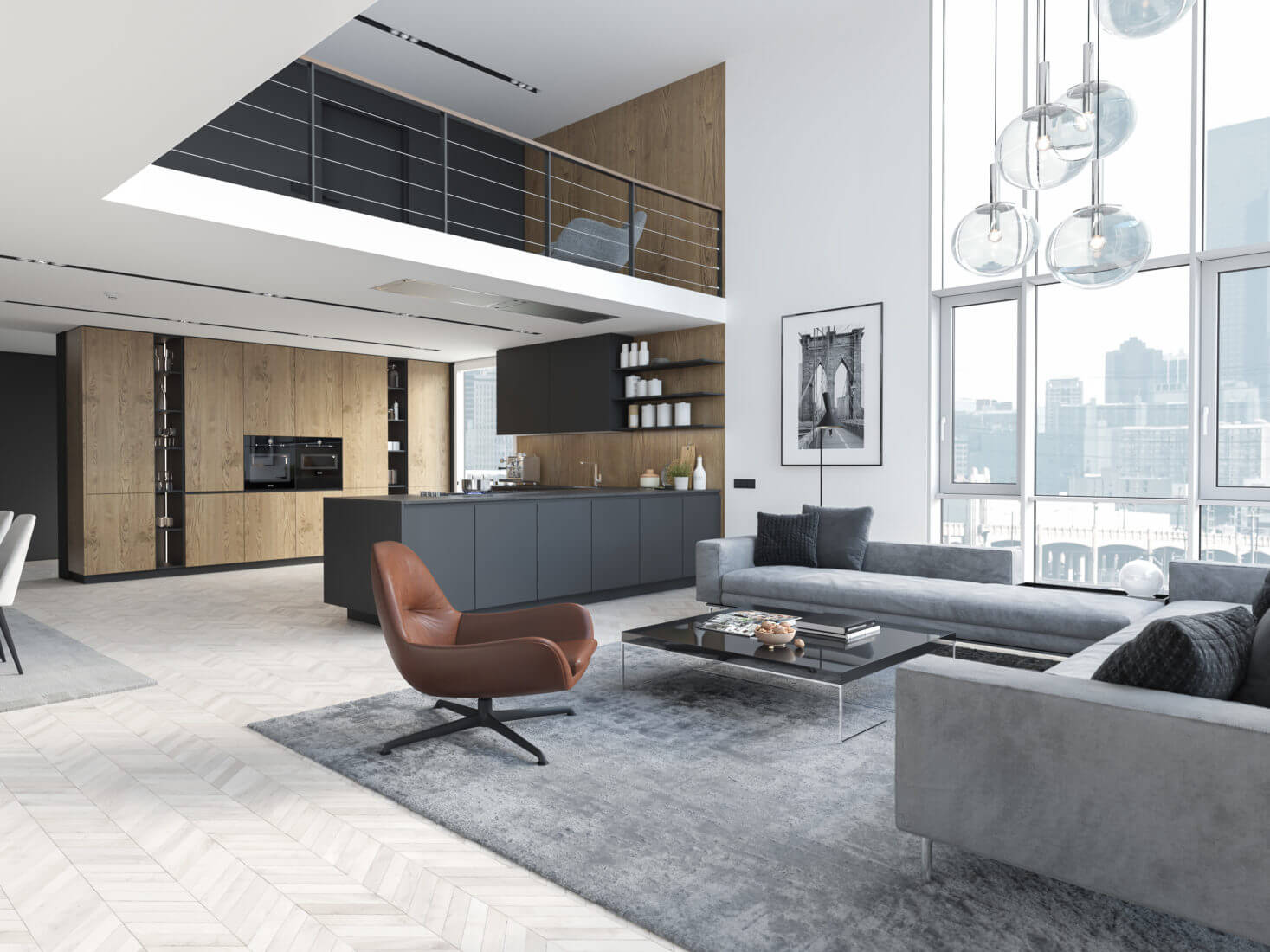

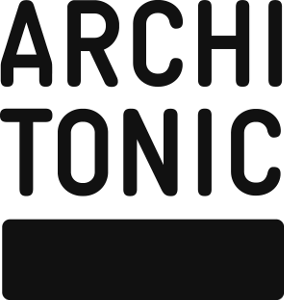
Content is king – this is nothing new within the SEO industry. But to manage very large websites with more than 1 million pages in 5 different languages, you’ll really have your work cut out for you. A platform often hinges on its good visual material. But is this enough or is SEO copywriting mandatory on every single page? In this case study, we will reveal to you how we are tackling the problem together with our partner Architonic.
Architonic is one of the largest online platforms for architects. Many manufacturers and designers are represented on architonic.com, where they present their products and provide CAD drawings, catalogs and price lists. At the same time, Architonic is a platform on which construction projects are presented and important trade fair dates for the architecture industry are published.
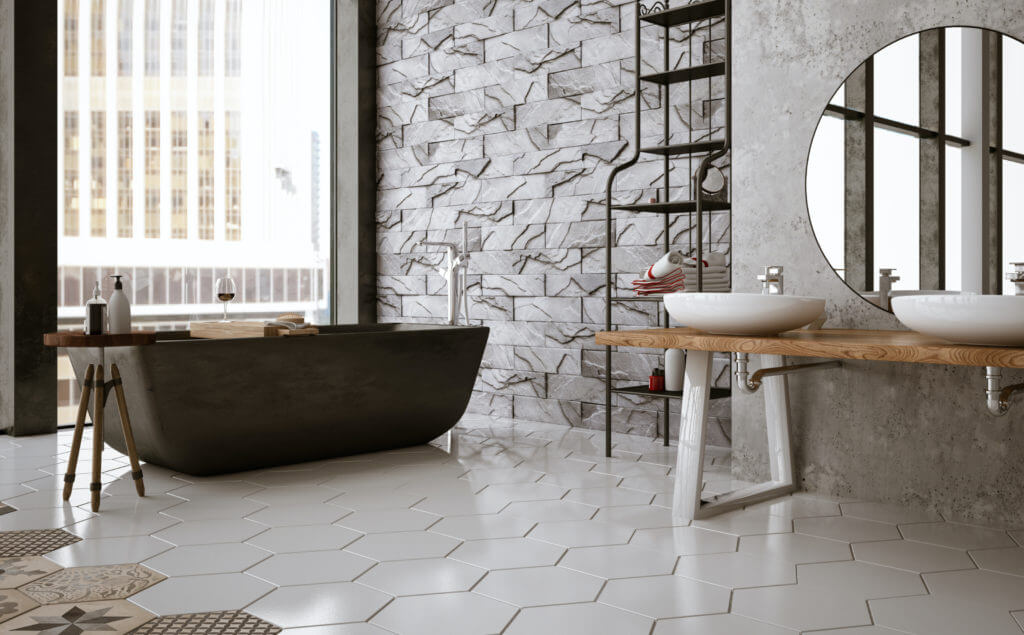
The term “SEO writing” is a popular buzzword in the digital world. And SEO-friendly texts are actually one of the most important ranking factors for Google. However, it is important to understand that we write texts not so much for Google, but for our potential customers. Texts must offer added value and help people make decisions. As for images, they are intended to facilitate a better understanding and illustrate detailed information in a visual way.
Architonic features 12,000 designers, 1,500 manufacturers as well as 400,000 products. The products’ category pages are sorted according to numerous category levels. Each category page is its own static landing page.
Some examples:
By working with static pages (instead of filtered pages), we stand a good chance of getting a good ranking for each subcategory.
Since filtered pages are only a subset of the main page, they should be set to “noindex“. However, if the filtered products represent a familiar subgroup (and therefore have a high-search volume), it is recommended to use fixed URLs and a static page.
But faced with 400,000 products, there are many hundreds of category pages that need to be optimized. For companies lacking the needed resources, such a mammoth task could take several months.
First, we took a look at which product groups we want to create content for. Let’s stick to our above examples and shift our attention to search volumes:
—————————————
Many of the products show a similar picture. We decided to initially focus on the third level. The search volume is very big, while the product group is at the same time not too generic. But what do you write in a text about dining tables? And how can the problem be solved that there are still hundreds of texts that need to be created?
In order to reduce the workload, we have opted for a semi-automatic variant.
If we used the same text all the time, while only changing the product name (“dining table” or “table lamp”), the text could never provide good information. What is more, Google would most probably recognize the text as duplicate content and rate it negatively. In the case of Architonic, we have therefore agreed on an in-between solution, as we cannot entirely dispense with the creation of own content.
The texts now consist of a first individual part (ideally of at least 200 words), followed by a rather generic blank text. As for the latter, we have come up with 3 variants, thereby providing additional variety. In the blank text, we then insert the product group (“dining table” or “table lamp”), while at the same time filling in the categories above and below. The text then concludes with some general information about using the platform. An example: “How does a user get CAD or manufacturer information of his favorite product?”
Through the publication of the text, Google can from now on grasp the content of the page not only by its product images, but also by the text – and take it into account in its search results.
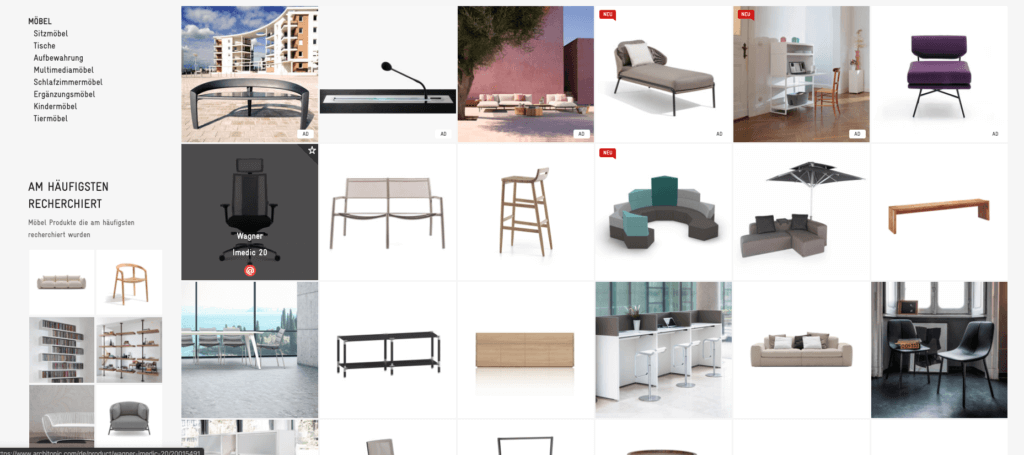
Of course, good texts alone cannot suffice. But they form a good base. In the picture above, you can see a lot of product pictures. It is important to provide those images with the relevant meta tags, in particular the so-called „alt tags“. They are used to describe the image as precisely as possible, which is important, since Google draws on them for their “image recognition”.
The second important aspect, which is particularly relevant for very large pages, is internal linking. When it comes to crawling, the search engine bot jumps from link to link and accesses the various pages of the website. However, if the previously optimized page is now only accessible via a single link, the bot takes this to be a weak signal. The entire content optimization will then only have a very minor effect.
We are now amidst a continuous process. For each period of approx. 2 months, we define approx. 7 product groups for which texts are created. The most time-consuming part is constituted by the writing of the first unique text block. In a second step, the texts are translated into the various languages of the website (English, Italian, Spanish and French). In addition, someone should always proofread the texts before they are published. This is particularly true for fields filled in with variables, as this can lead to absolute grammatical nonsense – which users would find anything but professional.
In our first evaluation, we have come to notice that the impact on the ranking was not as high as we had wished for. Still, we were able to improve some of the keywords by 25% – 50%. What is more, some keywords that had not ranked before have found their way into the top 50.
Nevertheless, it is now important for us in a second step to examine the internal linking more thoroughly with regard to product group level 3 and to strengthen it accordingly. Especially with regard to threshold keywords that currently rank 8th to 15th in Google’s SERPs, we still see lots of potential to push them forward.
Conclusion: SEO is a very broad field in digital marketing. Clever changes to the page help increase the added value not only for the user, but also for the search engine. SEO copywriting and unique content play an important role here, but are far from being the only game changers. It also requires a comprehensive SEO strategy to improve the ranking of relevant keywords and to increase both your visibility and organic traffic.
